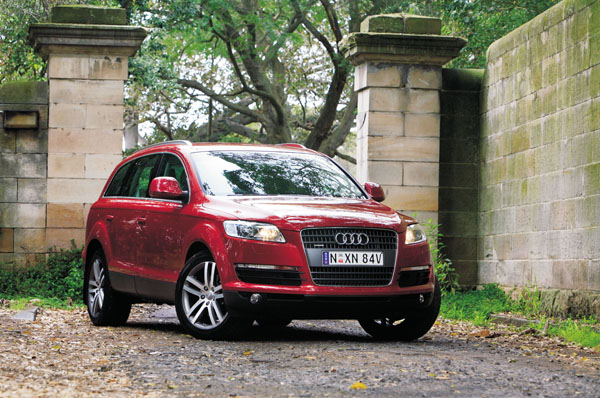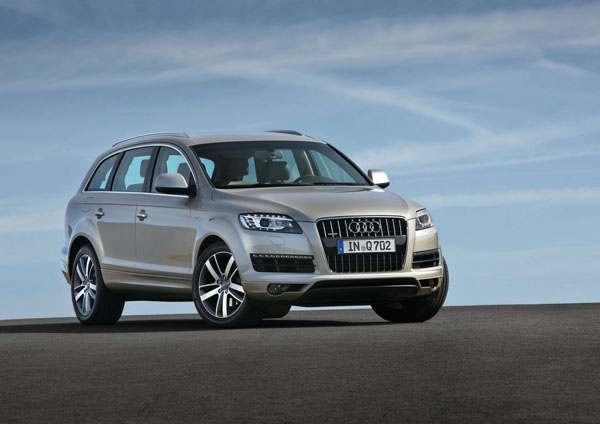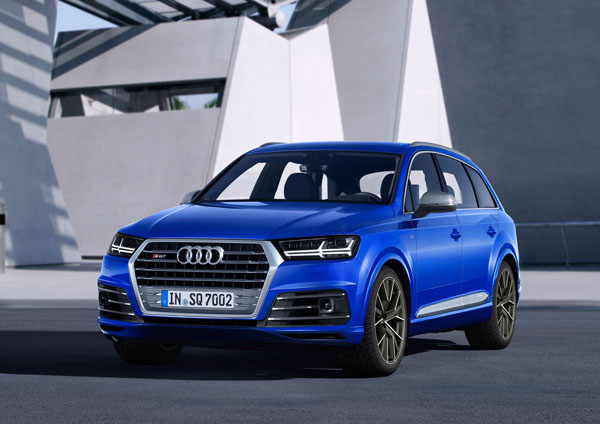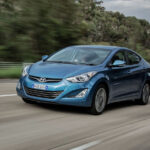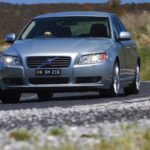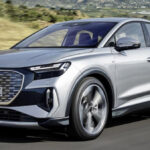The first Audi Q7 was imported to Australia from September 2006. It was designed as a semi-serious 4WD not simply an SUV.
Keen on proving they would work in the harshest areas of Australia, Audi sent no fewer than 15 Q7s to take part in a 7000 kilometre trek. Departing from Sydney it traversed the country to Broome, being driven hard on unsealed roads through Sturt’s Stony Desert and the Tanami Desert, as well as tackling the biggest sand dune of the Simpson Desert, the famed Big Red.
Top of the range V8s have adaptive air suspension as standard equipment and this is available as an option on the diesel versions, which have coil springs and dampers in their basic guise.
With the adaptive air suspension, ride height can vary between 180 mm and 240 mm, depending on conditions and on the mode selected by the driver. When in off-road setting, running at maximum height, the system will lower the ride height once the vehicle exceeds 100 km/h, to provide a lower centre of gravity.
So good was the original Q7 design that it lasted for close to a decade, with the second generation not being released in Europe until May 2015, and imported to Australia just four months later.
The gen-two Audi Q7 leans more in the direction of family station wagon than conquering deserts. But it still retained good off-road traction using the high-tech electronics. Trimming down the overall toughness let the designers remove almost a third of a tonne from the mass of the Q7. The use of high-tech body materials played their part.
Interestingly, the Q7 is available as a five, six or seven seater. The six-seat version was ignored by most and a large percentage of new car buyers went for the seven seaters.
Interior space is good, though as is usually the way the third row is best left for the junior travellers.
Initially, Q7 was available in Australia with a choice of a 171 kW 3.0-litre, six-cylinder turbo-diesel engine, or a 257 kW 4.2-litre petrol V8. A 3.6-litre V6 petrol engine developing 206 kW was added to the range a few weeks after the diesels. In September 2010 the 3.6 V6 petrol was replaced by a V6 supercharged unit displacing 3.0 litres and producing 245 kW. The V8 petrol was also discontinued at this time.
If you think too much grunt isn’t quite enough you may care to buy a 6.0-litre V12 turbo-diesel with a 1000 Newton metres – yes, 1000Nm of torque! It went on sale here November 2009. With a price tag of over a quarter of a million dollars these weren’t exactly big sellers so were pulled off the price list midway through 2012.
Engines were mated to a six-speed tiptronic automatic until the 2010 makeover, when an eight speed conventional auto was installed. Both automatics have Tiptronic manual shifts for those who prefer to select their own gears.
Drive it to all four wheels using Audi’s quattro system – no namby pamby.
The hot variant, the Audi SQ7 is powered by 4.0-litre V8 diesel engine with two variable-geometry turbochargers that can produce up to 2.4 bar of boost pressure. It uses an electrically powered compressor (EPC) to blow air into one of the diesel turbochargers to reduce turbo lag.
The 48-Volt EPC spins up to its full 70,000 rpm within about a quarter of a second and nudges the exhaust powered compressor up to speed with the added air.
This 2.3-tonne SQ7 SUV can leap from rest to 100 km/h in just 4.8 seconds.
There are plenty of Audi dealers in Australia. Most are in metro regions, but dealers are increasing in numbers in major country cities.
These are complex vehicles and we suggest owners only tackle the most basic of repair and servicing work themselves. It makes sense to use only professionals with training in the marque.
Insurance premiums are about average for the upmarket Euro SUV class and there is seldom a great deal of difference in charges from one company to another. If shopping around make sure you understand the exact comparisons.
WHAT TO LOOK FOR
A full service record showing everything was done on time should be considered a must.
People movers that do heavy-duty work carting kids can get seriously knocked about. It’s smart to do the initial stages of your pre-purchase inspection by checking out the area behind the front seats.
Luggage carting can be tough on carpet and seatbacks, check for damage in these areas as well.
Make sure the engine starts quickly and idles smoothly even when it’s cold.
Check the transmission doesn’t hunt up and down the gears when it really should be holding onto a single ratio.
Uneven front tyre wear probably means a Q7 has been the subject of some hard driving by an over enthusiastic driver. More seriously, it may also mean one of the wheels is out of alignment caused by a hard thump against a kerb.
Or, still worse, that it’s done some heavy duty off-road work.
HOW MUCH?
Look to spending from $7000 to $11,000 for a 2006 Audi Q7 4.2 FSI; $11,000 to $16,000 for a 2008 4.2 FSI; $17,000 to $24,000 for a 2008 3.6 FSI SE; $24,000 to $33,000 for a 2009 3.0 TDI Limited Edition; $24,000 to $45,000 for a 2009 6.0 TDI; $34,000 to $47,000 for a 2013 3.0 TFSI; $46,000 to $60,000 for a 2011 6.0 TDI; $58,000 to $77,000 for a 2014 4.2 TDI; $65,000 to $86,000 for a 2015 4.2 TDI; and $98,000 to $132,000 for a 2016 SQ7 TDI V8.
CAR BUYING TIP
A 4WD that’s been used in the harsh life of a suburban people mover may have aged just as much as one that’s seen off-road driving in the great Aussie outback.
RECALLS: To browse recalls on all vehicles go to the ACCC at: www.productsafety.gov.au/products/transport/cars/




